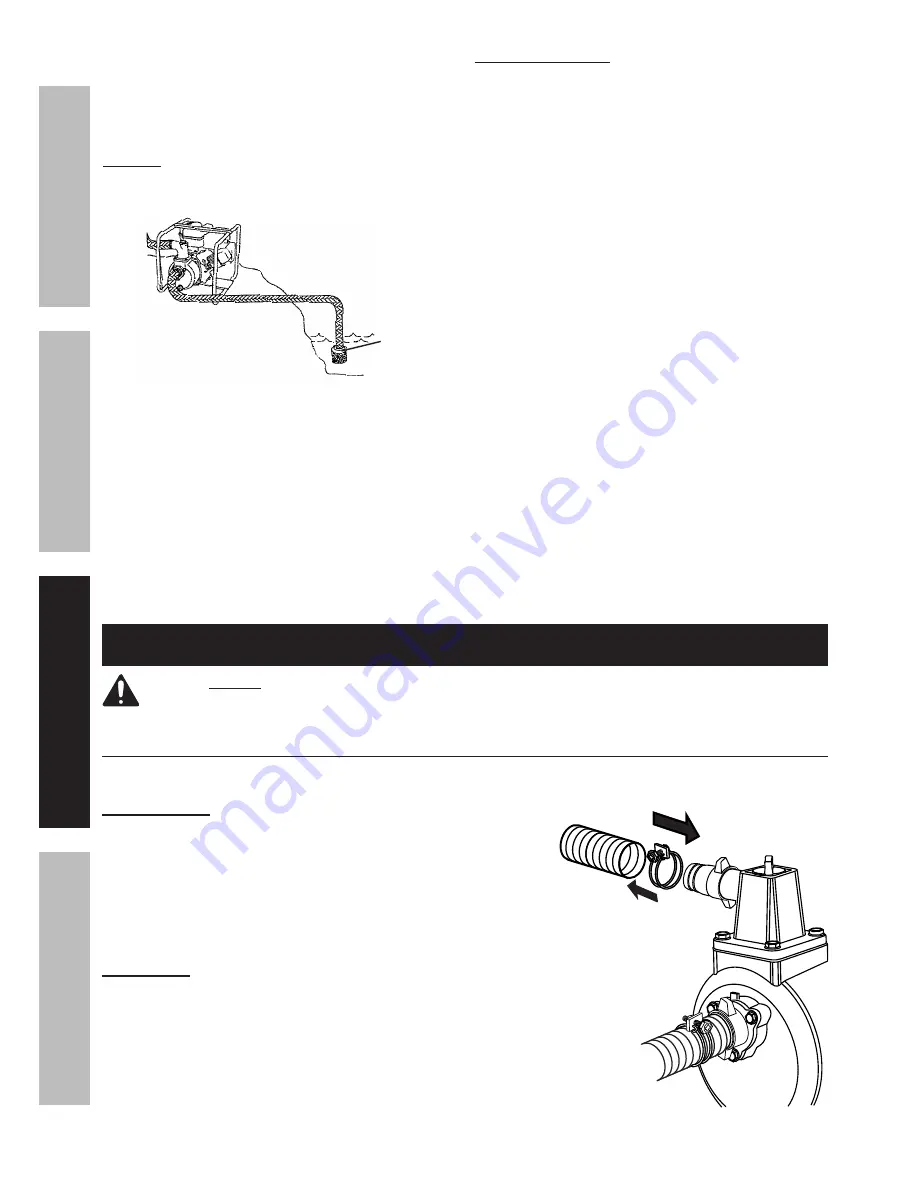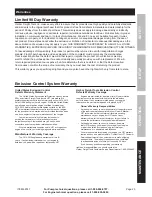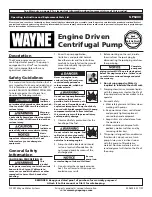
Page 10
For Pump technical questions, please call 1-888-866-5797.
For Engine technical questions, please call 1-800-520-0882.
ITEM 69747
SAFETY
O
PERA
TION
M
AINTENANCE
SETUP
Operation
Read the ENTIRE IMPORTANT SAFETY INFORMATION section at the beginning of this manual
including all text under subheadings therein before set up or use of this product.
Pre-Start Checks
Inspect engine and equipment looking for damaged, loose, and missing parts before set up
and starting. If any problems are found, do not use equipment until fixed properly.
Prime the Pump
Before starting the engine, fill the Pump with water.
To do this:
1. Unthread the Priming Water Filler Cap
by turning it counterclockwise.
2. Fill the unit with clean water up to the
top of the opening. Replace the Priming
Water Filler Cap and tighten securely.
IMPORTANT!
Always check for water in the Pump
Housing before each use. Never attempt to run the
Water Pump without the Pump Housing FULL of water.
Running the Water Pump without water for
an extended period of time will damage the
Water Pump and void the Warranty.
a
b
3. Place Strainer into water to be pumped.
NOTICE:
Strainer must be fully immersed in water.
Do not operate Pump without Strainer connected
to end of suction hose. Keep Strainer out of sand
or silt by placing Strainer in a bucket or on stones.
NOTICE:
If there is an air leak in the suction line,
you may not be able to prime the pump.
Use of a thread sealant is recommended.
Strainer
4. Secure the Intake Hose in place to keep it
from moving once the Pump is turned on.
The Intake Hose should be as short as
possible for more efficient operation.
5. Route the discharge hose to the desired discharge
location. If necessary, connect additional discharge
hoses to direct the discharge to the desired location.
Make sure to secure the discharge hose in place
to keep it from moving once the Water Pump is
turned on. The discharge hose should be kept as
short as possible for more efficient operation.
Operation Concerns
1. Cavitation: This is the sudden formation and
collapse of low-pressure vapor (bubbles)
across the vanes of the impeller.
Cause: When the surface pressure on a liquid
becomes low enough, the liquid will begin to boil
(even at room temperature). With centrifugal
pumps, cavitation can occur when the suction
vacuum becomes too great, allowing water vapor
or bubbles to form at the impeller. The rapid
pressure increase can cause impeller damage.
Solution: Minimizing suction head and using
the largest practical suction hose diameter will
reduce the likelihood of cavitation.
Do not use
a suction hose with a diameter smaller than
the Pump’s Intake Port (1
"
diameter).
2. Water Hammer Pressure: This is energy
sent back to the Pump due to sudden
stoppage of water flowing from the Pump.
Cause: Water hammer pressure is more likely to
occur when using a very long discharge hose. If the
flow of water at the end of the discharge hose is shut
off suddenly, energy is sent back to the pump. This
causes a large pressure spike in the Pump housing,
leading to potential damage to the Pump casing.
Solution: Use as short a discharge
hose as possible and
turn off water
pump before closing water flow.
Summary of Contents for 69747
Page 1: ......










































